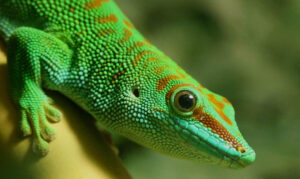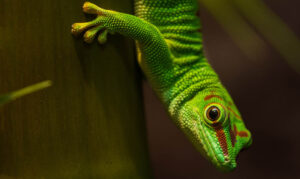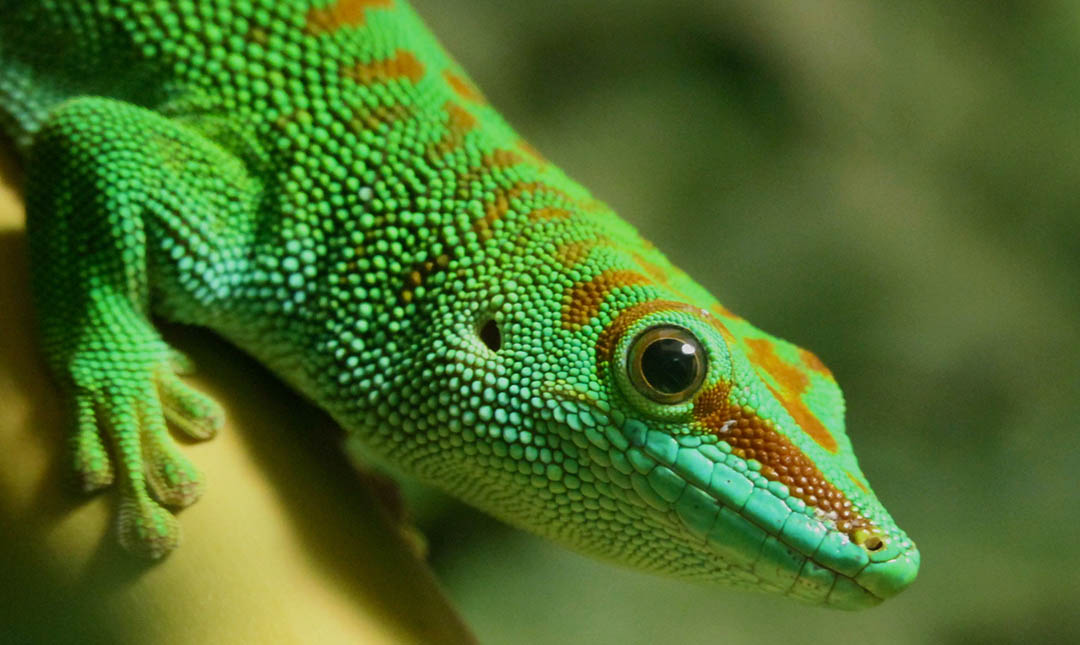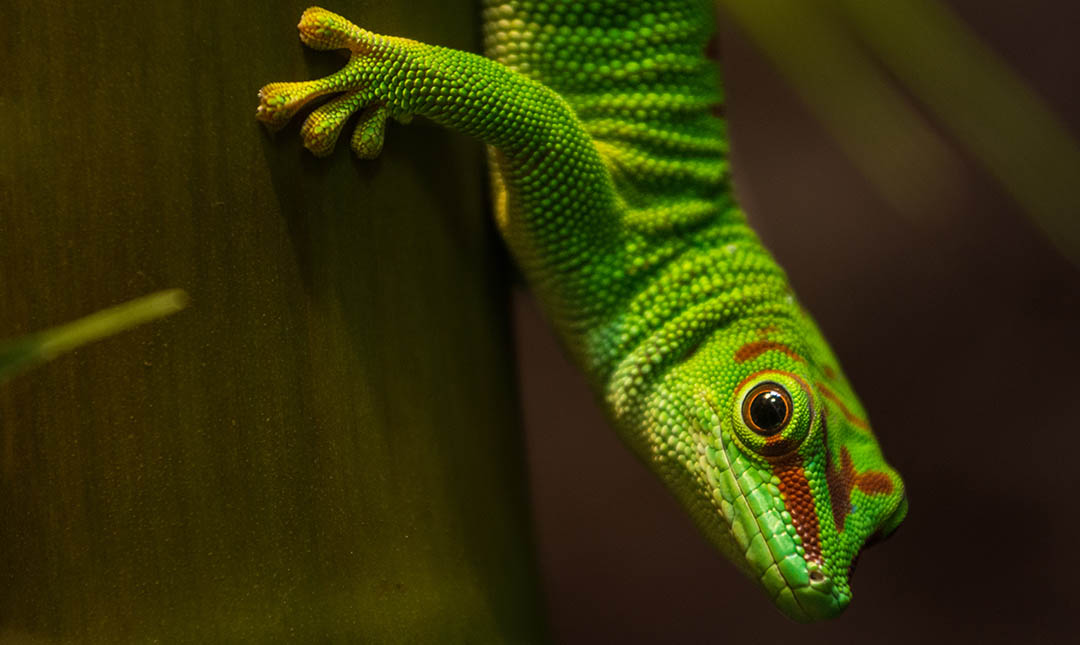About
These living jewels are bright emerald-green with scattered red lines and spots. The vibrant neon colors most likely evolved to catch the eye of prospective mates as well as signal nearby rivals. When scientists first discovered this species (in about 1870), they wondered how such eye-popping hues could go unnoticed by predators. As it turns out, the same colors that stand out against a signpost or a wall help the gecko blend in among the shimmering leaves and vibrant flowers of their tropical habitat.
Often found in gardens, huts, and tree plantations as well as the tropical rainforest, geckos have specialized toe pads covered in tiny hairs called setae that allow them to cling to many surfaces—even glass. Each seta splits off into hundreds of smaller bristles called spatulae. These tufts of tiny hairs get so close to the contours in walls and other surfaces that electrons from the gecko’s hair molecules and electrons from the surface molecules interact with each other, generating a type of electromagnetic attraction called the van der Waals force. By studying gecko setae, researchers have developed glue-free adhesive tape and stitch-free ways to close wounds.
While most geckos are nocturnal, these geckos are active during the day, basking in the sun and hunting insects. They rarely descend to the ground. Their skin is covered in hair-like spines that are filled with air and repel water. Like other reptiles, their skin does not expand as they grow, and they shed it about every four weeks. Geckos eat their own shed because it is rich in minerals and by consuming it, they avoid leaving hints of their presence for potential predators. Madagascar giant day gecko vocalizations sound like frogs and include tiny squeaks, clicks, barks, and croaks that probably announce territory and attract mates.


Status
This species has not been evaluated by the International Union for Conservation of Nature (IUCN) due to Data Deficiency.
Habitat
The giant day gecko is native to the tropical and subtropical rainforests of Madagascar and some nearby islands. Giant day geckos are partial to palms and banana plants.
Diet
Their diet consists mainly of various insects and small invertebrates, although they are known to eat small vertebrates and even their own young. These geckos will also consume nectar from certain flowering plants.
Physical Characteristics
These are among the largest geckos in the world, growing up to 12 inches long. They weigh only about two ounces. Lifespan is estimated at 8-15 years.


